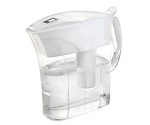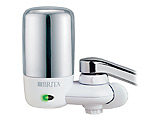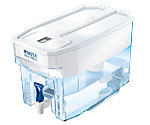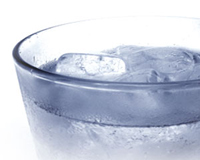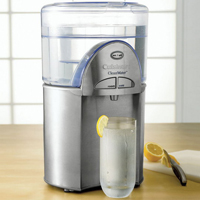
Water is an essential element for the body as it provides hydration, energy, and an improved appearance. When homeowners add filtered water to their home, they’ll have water that is free of impurities and pleasant to drink.
Types
There are several types of water filtration systems available. Homeowners should be able to install the units described in this article simply by following the manufacturer's installation instructions.
| Carafe filters The better models we tested did an excellent job removing lead and chloroform without sacrificing cartridge life or flow rate. Others were slow and prone to clogging and have a short filter life. A carafe or two stored in the refrigerator might suffice for one or two people, but not for a family of four that consumes several gallons of water a day. | |
| Faucet-mounted filters If you're looking for easy installation, these are a good choice for filtering drinking and cooking water. You simply unscrew the aerator from the threaded tip of the faucet and screw on the filter. Faucet-mounted filters let you switch between filtered and unfiltered water. On the downside, they slow water flow, and they don't fit on all faucets. | |
| Countertop filters These filters screw onto the faucet after you remove the aerator. They let you filter large quantities of water without modifying the plumbing, and they're less likely to clog than carafe or faucet-mount filters. But they can clutter a countertop, and they don't fit all faucets. | |
| Under-sink filters Like countertop filters, these can filter lots of water. But instead of cluttering the counter, they rob space from the cabinet beneath the sink. They also require professional plumbing modifications, and drilling a hole for the dispenser through the sink or countertop. These use household pressure to pass water through a semi-permeable membrane. They can remove a wide range of contaminants, including dissolved solids, and they are the only type certified to remove arsenic. But you must sanitize them with bleach periodically. Eventually the membrane must be replaced. They can also be extremely slow, rob cabinet space, and create 3 to 5 gallons of waste water for every gallon filtered. These are an inexpensive way to remove sediment and rust and, with some models, chlorine. Long cartridge life is another plus. But most whole-house filters aren't designed to remove many other contaminants, including cysts, metals, and volatile organic compounds. They require plumbing changes, but not at the sink or faucet. |
Water Contaminants
| | Your water may, or may not, suffer from any of these contaminants. If you're concerned about the quality of your water, have it tested by an independent laboratory. The filtration system you need for your home depends upon the quality of your water supply. Water filters do require some maintenance, and cartridges should be changed according to the manufacturer's recommendations. |
Buying Tips
| | Homeowners who receive their home’s water from a well should have their water tested annually as pollutants, such as lead, coliform bacteria, and nitrates, may enter the water source. Homeowners may contact their local health department or a privately owned testing laboratory for assistance. Another testing method involves the purchase of a self-testing kit online and sending the package into a laboratory for results. If a city features more than 10,000 residents, then the local health department should complete an annual water test. Consumers may find the results on the city’s official website, which will help residents select a water filter. Water filter consumers should consider several factors prior to their clean water system purchase. |
Once a homeowner has selected a water filter system, he or she must remember to change the filter at the proper times in order to provide clean drinking water. Often, filtering systems include an indicator light, which will alert the homeowner that it’s time for a replacement filter.
When buying a water filter, shoppers should confirm that the device is easy to use and efficient. For example, the filter should expel the same amount of water that a consumer pours in for cleansing. Consumers should also check each filter to assess the device’s contaminant removing capabilities as some filters will remove pollutants that others are unable to eliminate.
written by Nicolas Yang
